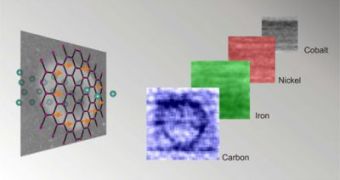Magnets are materials that produce a magnetic field of their own. Only a few elements, especially iron, cobalt, nickel and neodymium, are ferromagnetic (permanent magnets) at room temperature.
Now, a group of scientist has successfully introduced a naturally non-magnetic material to the exclusive club of magnetic elements.
Until now, they only suspected that carbon belongs to the short list of materials that can be magnetic at room temperature, but no solid proof was ever produced, and those who have been included are still widely controversial. "In the past, some groups thought they had discovered magnetic carbon," said Hendrik Ohldag, the paper's lead author and staff scientist at the Stanford Synchrotron Radiation Laboratory (SSRL) at SLAC. "Unfortunately, they realized later that they were misled by small amounts of iron, cobalt or nickel in their samples."
Researchers at the Department of Energy's Stanford Linear Accelerator Center (SLAC), working with colleagues from the University of Leipzig in Germany have finally demonstrated the carbon's ability to be made magnetic.
This is extremely useful in future applications, since carbon is a main component in many industrial branches. "With carbon, we know how to make things very small," said Ohldag. "On the other hand we know a lot about how to process and store information using magnetism. This opens up the door for future studies that will lead to improved magnetism in carbon that could one day we will be able to combine the 'magnetic' and the 'carbon' world."
The first observations of carbon displaying magnetic properties were made on a meteorite found in 1999, but the close proximity to nickel has cast doubt on carbon's ability.
What the team did was to apply a beam of protons that would disrupt and align a portion of the electrons in samples of pure carbon, thus magnetizing tiny, measurable spots within the carbon. Then they used a state-of-the-art x-ray microscope to get images of the magnetized portion.
This is truly the first research proving that transient magnetism on a small scale can be temporarily induced in carbon when it is brought near other magnetized elements.

 14 DAY TRIAL //
14 DAY TRIAL //